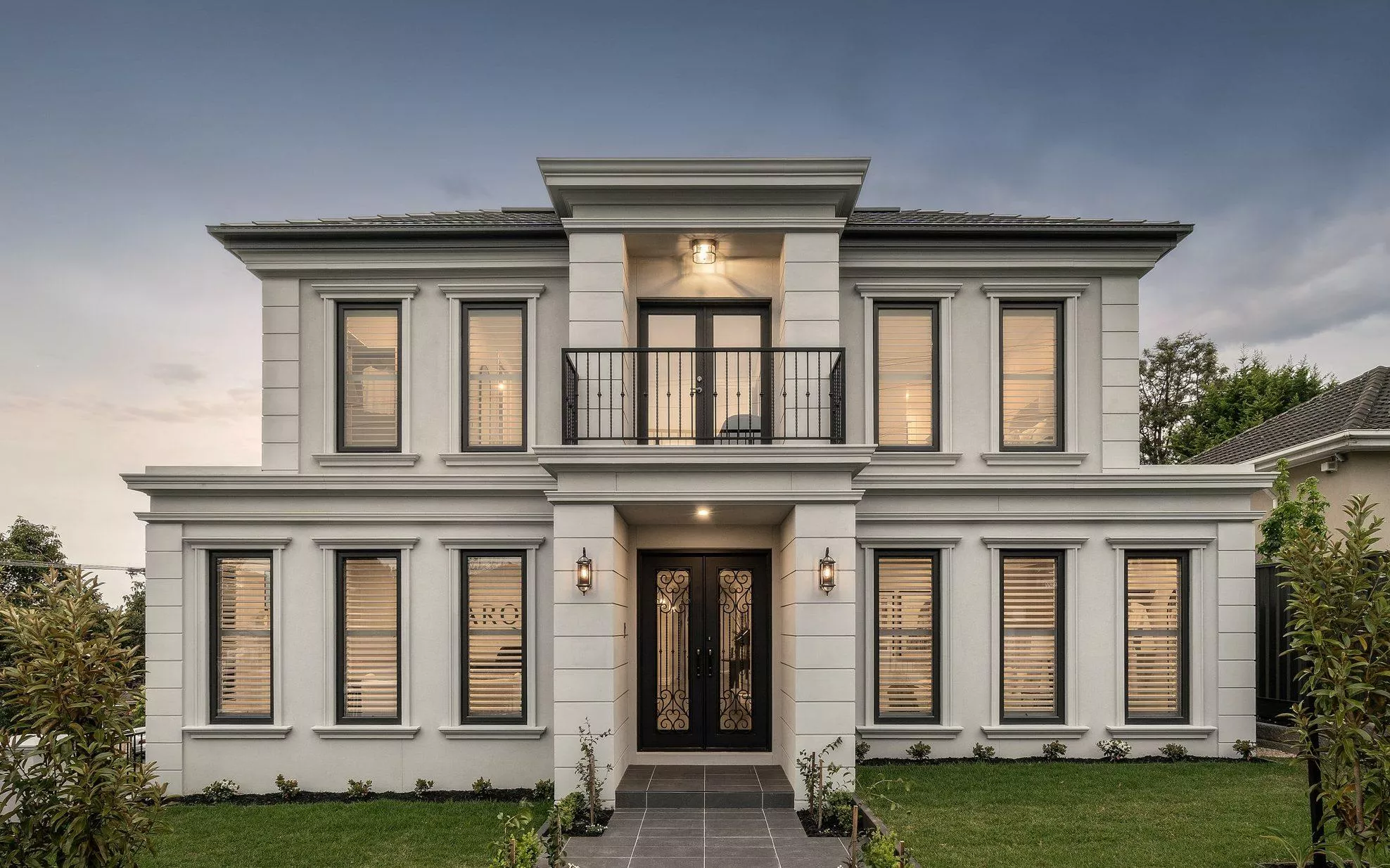Do you own land, perhaps with shabby residential or commercial property on it? One way to extract worth from the land is to sign a ground lease. This will permit you to make income and possibly capital gains. In this short article, we'll check out,

- What is a Ground Lease?
- How to Structure Them
- Examples of Ground Leases
- Pros and Cons
- Commercial Lease Calculator
- How Assets America Can Help
- Frequently Asked Questions
What is a Ground Lease?
In a ground lease (GL), a renter develops a piece of land during the lease duration. Once the lease ends, the tenant turns over the residential or commercial property improvements to the owner, unless there is an exception.
Importantly, the occupant is accountable for paying all residential or commercial property taxes during the lease duration. The acquired enhancements allow the owner to offer the residential or commercial property for more cash, if so preferred.
Common Features
Typically, a ground lease lasts from 35 to 99 years. Normally, the lessee takes a lease on some raw or prepared land and constructs a structure on it. Sometimes, the land has a structure currently on it that the lessee should destroy.
The GL defines who owns the land and the enhancements, i.e., residential or commercial property that the lessee constructs. Typically, the lessee controls and depreciates the improvements throughout the lease period. That control goes back to the owner/lessor upon the expiration of the lease.
Apply For Financing
Ground Lease Subordination
One important element of a ground lease is how the lessee will fund enhancements to the land. A key plan is whether the property owner will accept subordinate his priority on claims if the lessee defaults on its debt.
That's exactly what happens in a subordinated ground lease. Thus, the residential or commercial property deed ends up being collateral for the lending institution if the lessee defaults. In return, the property manager requests for higher lease on the residential or commercial property.
Alternatively, an unsubordinated ground lease keeps the property manager's leading priority claims if the leaseholder defaults on his payments. However this might discourage lenders, who would not be able to take ownership in case of default. Accordingly, the proprietor will usually charge lower lease on unsubordinated ground leases.
How to Structure a Ground Lease
A ground lease is more complex than regular industrial leases. Here are some elements that enter into structuring a ground lease:
1. Term
The lease needs to be sufficiently long to permit the lessee to amortize the cost of the improvements it makes. Simply put, the lessee should make sufficient earnings during the lease to spend for the lease and the improvements. Furthermore, the lessee should make a reasonable return on its financial investment after paying all costs.
The biggest chauffeur of the lease term is the financing that the lessee arranges. Normally, the lessee will want a term that is 5 to ten years longer than the loan amortization schedule.
On a 30-year mortgage, that means a lease term of a minimum of 35 to 40 years. However, fast food ground rents with shorter amortization durations may have a 20-year lease term.
2. Rights and Responsibilities

Beyond the arrangements for paying rent, a ground lease has numerous special features.
For instance, when the lease expires, what will happen to the improvements? The lease will define whether they go back to the lessor or the lessee need to eliminate them.
Another feature is for the lessor to help the lessee in getting needed licenses, licenses and zoning variations.

3. Financeability
The lender should draw on safeguard its loan if the lessee defaults. This is challenging in an unsubordinated ground lease since the lessor has initially concern in the case of default. The loan provider just has the right to declare the leasehold.
However, one treatment is a provision that requires the successor lessee to use the lending institution to finance the brand-new GL. The topic of financeability is intricate and your legal experts will require to wade through the different intricacies.
Remember that Assets America can help finance the construction or renovation of commercial residential or commercial property through our network of private investors and banks.
4. Title Insurance
The lessee should arrange title insurance coverage for its leasehold. This needs special endorsements to the routine owner's policy.
5. Use Provision
Lenders desire the broadest usage arrangement in the lease. Basically, the provision would enable any legal function for the residential or commercial property. In this method, the lender can more quickly offer the leasehold in case of default.
The lessor might have the right to consent in any new function for the residential or commercial property. However, the lender will seek to restrict this right. If the lessor feels highly about restricting certain uses for the residential or commercial property, it must define them in the lease.
6. Casualty and Condemnation
The loan provider controls insurance coverage proceeds originating from casualty and condemnation. However, this may contravene the basic wording of a ground lease, which provides some control to the lessor.
)
Unsurprisingly, lending institutions want the insurance continues to approach the loan, not residential or commercial property restoration. Lenders also need that neither lessors nor lessees can end ground leases due to a casualty without their consent.
Regarding condemnation, loan providers insist upon taking part in the proceedings. The loan provider's requirements for using the condemnation earnings and managing termination rights mirror those for casualty occasions.
7. Leasehold Mortgages
These are mortgages financing the lessee's improvements to the ground lease residential or commercial property. Typically, lenders balk at lessor's preserving an unsubordinated position with respect to default.
If there is a pre-existing mortgage, the mortgagee needs to consent to an SNDA agreement. Usually, the GL lender desires first priority regarding subtenant defaults.
Moreover, lenders require that the ground lease stays in force if the lessee defaults. If the lessor sends a notification of default to the lessee, the loan provider should get a copy.
Lessees desire the right to acquire a leasehold mortgage without the lending institution's permission. Lenders desire the GL to function as security must the lessee default.
Upon foreclosure of the residential or commercial property, the lending institution receives the lessee's leasehold interest in the residential or commercial property. Lessors might wish to limit the kind of entity that can hold a leasehold mortgage.
8. Rent Escalation
Lessors desire the right to increase rents after specified durations so that it preserves market-level rents. A "ratchet" increase uses the lessee no defense in the face of a financial recession.

Ground Lease Example
As an example of a ground lease, consider one signed for a Starbucks drive-through shipping container shop in Portland.
Starbucks' principle is to offer decommissioned shipping containers as an ecologically friendly alternative to traditional building. The first shop opened in Seattle, followed by Kansas City, Denver, Chicago, and one in Portland, OR.
It was a rather unusual ground lease, in that it was a 10-year triple-net ground lease with four 5-year choices to extend.
This offers the GL an optimal term of thirty years. The rent escalation clause provided for a 10% rent boost every 5 years. The lease worth was just under $1 million with a cap rate of 5.21%.
The initial lease terms, on an annual basis, were:
- 09/01/2014 - 08/31/2019 @ $52,000.
- 09/01/2019 - 08/31/2024 @ $57,200.
- 09/01/2024 - 08/31/2029 @ $62,920.
- 09/01/2029 - 08/31/2034 @ $69,212.
- 09/01/2034 - 08/31/2039 @ $76,133.
- 09/01/2039 - 08/31/2044 @ $83,747
Ground Lease Pros & Cons
Ground leases have their benefits and drawbacks.
The benefits of a ground lease include:
Affordability: Ground leases allow occupants to build on residential or commercial property that they can't afford to purchase. Large chain shops like Starbucks and Whole Foods utilize ground leases to expand their empires. This enables them to grow without saddling the companies with too much debt.
No Down Payment: Lessees do not have to put any money to take a lease. This stands in plain contrast to residential or commercial property getting, which may require as much as 40% down. The lessee gets to conserve money it can release in other places. It also improves its return on the leasehold financial investment.
Income: The lessor gets a consistent stream of income while keeping ownership of the land. The lessor keeps the value of the earnings through using an escalation stipulation in the lease. This entitles the lessor to increase leas periodically. Failure to pay rent offers the lessor the right to force out the tenant.
The disadvantages of a ground lease include:
Foreclosure: In a subordinated ground lease, the owner risks of losing its residential or commercial property if the lessee defaults.
Taxes: Had the owner just sold the land, it would have received capital gains treatment. Instead, it will pay ordinary corporate rates on its lease income.
Control: Without the needed lease language, the owner may lose control over the land's advancement and usage.
Borrowing: Typically, ground leases restrict the lessor from borrowing against its equity in the land during the ground lease term.
Ground Lease Calculator
This is a fantastic industrial lease calculator. You enter the area, rental rate, and representative's cost. It does the rest.
How Assets America Can Help
Assets America ® will set up financing for business projects beginning at $20 million, without any ceiling. We welcome you to call us for additional information about our total financial services.
We can assist finance the purchase, construction, or restoration of business residential or commercial property through our network of private financiers and banks. For the best in business property funding, Assets America ® is the wise choice.
- What are the various kinds of leases?
They are gross leases, customized gross leases, single net leases, double net leases and triple net leases. The also consist of outright leases, portion leases, and the subject of this article, ground leases. All of these leases offer advantages and drawbacks to the lessor and lessee.
- Who pays residential or commercial property taxes on a ground lease?
Typically, ground leases are triple net. That indicates that the lessee pays the residential or commercial property taxes during the lease term. Once the lease expires, the lessor becomes accountable for paying the residential or commercial property taxes.
- What takes place at the end of a ground lease?
The land always reverts to the lessor. Beyond that, there are 2 possibilities for the end of a ground lease. The very first is that the lessor acquires all improvements that the lessee made during the lease. The second is that the lessee needs to destroy the improvements it made.

- How long do ground leases usually last?
Typically, a ground lease term encompasses at lease 5 to 10 years beyond the leasehold mortgage. For example, if the lessee takes a 30-year mortgage on its enhancements, the lease term will run for a minimum of 35 to 40 years. Some ground leases extend as far as 99 years.







